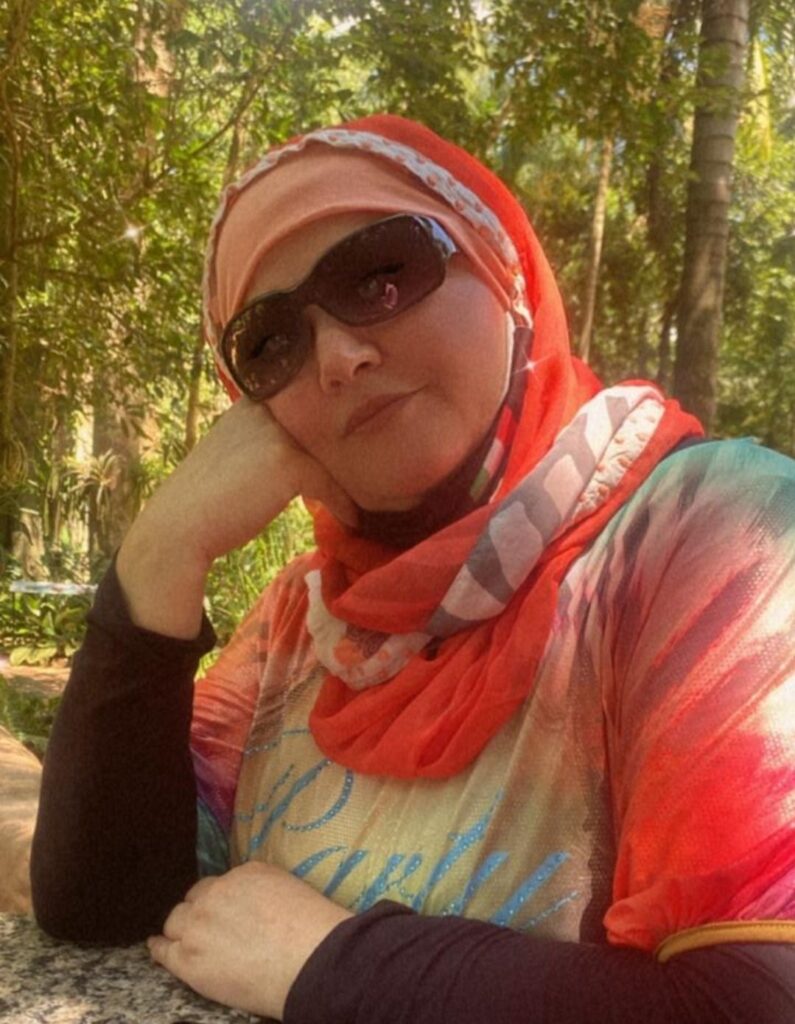Επιμέλεια: Εύα Πετροπούλου Λιανού
Written by TAGHRID BOU MERHI | Lebanon / Brazil
A literary novel that won the 1983 Nobel Prize in Literature, exploring the lives of a group of African American women in the Brewster neighborhood.
“A man is not judged by the color of his skin, but by the content of his character.” – Martin Luther King Jr.
Racism and color discrimination have historically existed for a long time, but they became more pronounced during slavery and its aftermath in both American and global history. During this period, racism and color discrimination were used as tools to justify and legitimize the system of slavery and racial segregation.

With the development of social movements and the struggles of Black people and human rights advocates, signs of rebellion against societies that ostracized Black individuals began to emerge towards the end of the 19th century and throughout the 20th century. Anti-racism protests and demonstrations increased, along with calls for equality and an end to racial discrimination in various fields such as education, employment, housing, and social life.
For example, the Civil Rights Movement in the United States during the 1950s and 1960s included numerous protests and demonstrations against racial segregation and discrimination. The modern era has also seen increased awareness and activism against racism, as well as the rise of organizations and movements demanding the end of racial injustice and discrimination.
“The Women of Brewster Place” by American author Gloria Naylor, who won the 1983 Nobel Prize in Literature, is one of the most significant novels exploring the lives of African American women in the Brewster Place neighborhood. It highlights issues of identity, relationships, and the social struggles these women face. The novel is distinguished by its elegant style and its ability to create vivid and realistic portrayals of characters and situations.
The story deeply explores the experiences of Black individuals, contributing to a greater understanding and appreciation of their challenges and hardships. As a result, the novel serves as an important contribution to shedding light on Black issues and improving public awareness of their experiences and struggles, helping to reshape international perceptions of Black people in some societies.
In “The Women of Brewster Place,” Gloria Naylor presents realistic portrayals of the lives of African American women in Brewster Place, highlighting the significant challenges they face due to the color of their skin. These challenges range from racial oppression, poverty, violence, and lack of opportunities to social and workplace discrimination.
For example, the book tells the stories of women who struggle to gain recognition for their worth and competence due to their skin color. They face discrimination in various aspects of life, including employment, where they struggle to secure equal opportunities compared to their white counterparts, and within society, where they experience isolation and marginalization.
Furthermore, the novel highlights the psychological and emotional consequences of this discrimination, as African American women live under constant stress and anxiety due to the racism and unjust treatment they endure.
Thus, the novel illustrates how skin color can become a significant barrier, leading to marginalization and exclusion, making people outcasts in their communities due to the racism and discrimination they face.
The book’s title, “The Women of Brewster Place,” symbolizes the Black women of the Brewster neighborhood and reflects their experiences and stories within their society and culture. It underscores the importance of understanding their realities and challenges in a world marked by racism and discrimination. The novel addresses various social and cultural issues affecting Black women in America.

Key Characters in “The Women of Brewster Place”:
1. Mattie Johnson – A strong, kind-hearted woman who manages the home where Black women gather in Brewster Place. Mattie embodies faith and optimism despite life’s challenges. She serves as a spiritual leader for the community, offering support and guidance to the women in difficult times.
2. Lennox Samuel – A character representing youth and ambition in the neighborhood, striving to achieve her dreams and aspirations. She faces challenges while living in Brewster Place but remains determined to reach her goals, whether in education or building personal relationships.
3. Peggy – A young woman who struggles with life’s hardships, including domestic violence and poverty. She fights for survival, safety, and independence, expressing her desire for a better and more stable life despite the difficulties she faces.
The Black women in “The Women of Brewster Place” endure various struggles, including:
Physical and emotional violence, leading to psychological and physical consequences.
Poverty and economic marginalization, as they live in difficult financial conditions with limited economic and employment opportunities.
Discrimination and oppression due to their skin color, resulting in unjust treatment and marginalization in society and various fields such as education and employment.
Lack of social and communal support, causing feelings of isolation and disconnection from society, with insufficient resources to help them overcome their challenges.
In “The Women of Brewster Place,” Naylor focuses on themes of deferred dreams of love (both familial and romantic), marriage, respect, and economic stability, while also conveying the recurring message that poverty breeds violence, true friendship and affection transcend gender, and that women in Black urban ghettos in America bear their burdens with grace and courage.
All the characters in “The Women of Brewster Place” are fictional. However, these fictional characters reflect the real-life experiences and struggles of Black women in society, representing genuine issues and challenges faced by African American women in urban America.
By using these fictional characters, Gloria Naylor provides a realistic and profound depiction of Black women’s lives in Brewster Place, allowing readers to empathize with their experiences and understand their struggles. Although the characters are not directly real, they convey authentic truths and lived realities for women in American society.
As modern social and cultural developments progress, the movement toward equality and social justice appears to be ongoing and inevitable. However, achieving fundamental changes in societies requires continuous and multi-dimensional efforts, including legal reforms, education, awareness, and cultural transformation.
True equality and the elimination of racial discrimination require a comprehensive shift in social and cultural awareness, alongside effective legislative and political measures that protect minority rights and ensure equal opportunities and fair treatment. In the long run, these combined efforts can reduce racism and achieve true equality among all individuals.
However, it is essential to understand that achieving this goal takes time and continuous effort, and numerous obstacles and challenges may arise along the way. Nevertheless, consistent work toward building more tolerant and just societies can lead to positive transformations, allowing people to live with equality, free from discrimination based on race or skin color.
In her novel “The Women of Brewster Place,” Gloria Naylor does not offer a definitive solution to the lives of Black women in Brewster Place, but she presents their challenges and hardships with realism. Nonetheless, the story leaves room for hope and belief in the potential for change and improvement.
The novel keeps the door open for optimism and progress, showing how Black women learn from their experiences and continually reconcile with their challenges. Despite all difficulties, these women exhibit willpower and determination to overcome obstacles and build better lives for themselves and their families, leaving readers with a sense of hope and faith in the possibility of transformation and improvement in difficult circumstances.
About Gloria Naylor
Gloria Naylor was an African American novelist best known for her debut novel “The Women of Brewster Place,” which was adapted into a 1984 film starring Oprah Winfrey.
Naylor won the National Book Award for Best First Novel in 1983 for “The Women of Brewster Place.” Her later novels included “Linden Hills,” “Mama Day,” and “Bailey’s Café.” In addition to her novels, she wrote essays and screenplays and founded One Way Productions, an independent film production company.
A graduate of Brooklyn College and Yale University, Naylor received numerous honorary awards, including Resident Scholar at the University of Pennsylvania, Senior Fellow at the Society for the Humanities at Cornell University, the President’s Medal from Brooklyn College, and Visiting Professor at the University of Kent, Canterbury, England.
Naylor was also awarded Guggenheim and National Endowment for the Arts Fellowships for her novels, along with a New York Foundation for the Arts Fellowship for Screenwriting.
Her work provided a powerful and vivid portrayal of key social issues, including poverty, racism, homophobia, sexism, and social marginalization in African American communities.

































